Smart Kitchen Appliances — AI ovens, voice control, smarter fridges
Introduction — The Smart Kitchen Revolution
The kitchen has always been the heart of the home — a space where families gather, meals are prepared, and creativity flows. But in 2025, the kitchen isn’t just a place of tradition; it’s a hub of technology, efficiency, and artificial intelligence. Welcome to the era of smart kitchen appliances — where ovens learn your favorite recipes, fridges help manage your groceries, and voice commands make cooking completely hands-free.
Driven by the rapid growth of IoT (Internet of Things) and AI (Artificial Intelligence), today’s kitchens are evolving from simple cooking zones into intelligent ecosystems. These spaces combine automation, data, and personalization, making cooking easier, faster, and even more enjoyable.
From AI-powered ovens that recognize food to smart fridges that track expiry dates and suggest recipes, the future of the kitchen is here. And with voice control and cloud connectivity, even the busiest households can cook smarter — not harder.
🍳 What Makes a Kitchen “Smart”?
A smart kitchen integrates connected appliances and AI technology that work together to simplify daily cooking and kitchen management tasks. The core concept revolves around automation, communication, and customization.
Smart appliances use Wi-Fi, sensors, and cloud-based AI to analyze user behavior and optimize cooking results. Imagine your oven preheating automatically when you open your recipe app, or your fridge sending you a reminder to buy milk.
The ecosystem typically includes:
- Smart ovens and microwaves
- AI-integrated refrigerators
- Voice-controlled dishwashers, coffee machines, and cooktops
- IoT-connected blenders and air fryers
- Smart lighting and temperature control systems
The integration of these devices with digital assistants like Alexa, Google Assistant, and Apple HomeKit allows users to control the entire kitchen through voice or mobile commands.
This isn’t just convenience — it’s intelligent living.
🔥 AI-Powered Ovens — Precision Meets Intelligence
One of the biggest breakthroughs in smart kitchens is the AI oven. Traditional ovens rely on manual settings, but today’s intelligent ovens are capable of:
- Identifying food items automatically via internal cameras and AI vision.
- Adjusting temperature and time for perfect results.
- Monitoring doneness using infrared or moisture sensors.
- Connecting to recipe apps that send exact instructions directly to the oven.
For example, Samsung’s Bespoke AI Oven or June Oven can recognize ingredients placed inside, suggest optimal cooking modes, and even send real-time notifications to your smartphone.
The AI learns your preferences — whether you like your pizza crust crispy or your salmon tender — and replicates those results automatically.
🔧 Key Features of AI Ovens:
- Food recognition AI: Detects dish type and recommends settings.
- Self-cleaning systems: Uses steam or pyrolytic technology.
- Voice commands: Integrates with Alexa or Google for hands-free operation.
- Energy optimization: Adjusts heating zones for efficiency.
- Cooking analytics: Tracks usage data to personalize suggestions.
These ovens represent the future of convenience — transforming ordinary cooking into an autonomous culinary experience.
🧊 Smart Refrigerators — Beyond Cooling, Into Lifestyle Management
The refrigerator has evolved from a storage box into a central hub of smart home activity. Today’s smart fridges are not just about keeping food fresh — they manage groceries, meal planning, and even family communication.
🥗 Key Smart Features:
- Internal cameras: Let you check contents remotely via smartphone.
- Inventory tracking: Monitors items and expiration dates.
- Smart shopping lists: Sync automatically with grocery apps.
- Energy-saving compressors: Adapt cooling levels based on usage.
- Touchscreen displays: Function as digital hubs for recipes, notes, and media.
Some advanced models, like the LG InstaView ThinQ or Samsung Family Hub, take it a step further by integrating with voice assistants and online delivery services.
You can simply say, “Add eggs to my shopping list”, and your fridge will handle the rest — updating your grocery app and syncing with your calendar for meal prep.
💡 AI in Action:
AI-powered refrigerators analyze usage habits — for example, how often you open the door or what foods you consume frequently — to optimize cooling efficiency and reduce waste. Some models even suggest meal plans based on what’s available inside.
The result is a fridge that not only preserves freshness but also contributes to smarter nutrition and energy savings.
🗣️ Voice-Controlled Appliances — Hands-Free Kitchen Magic
Voice control has transformed the way people interact with their homes — and nowhere is it more practical than in the kitchen.
With Alexa, Google Assistant, and Siri integration, users can now:
- Turn on ovens
- Adjust fridge temperatures
- Brew coffee
- Set timers
- Start dishwashers
— all without touching a button.
This hands-free control is particularly useful when cooking multiple dishes or handling food.
🧠 Real-Life Applications:
Imagine this:
“Hey Google, preheat the oven to 180 degrees.”
“Alexa, start the dishwasher.”
“Siri, show me chicken pasta recipes.”
These commands aren’t futuristic anymore — they’re everyday conveniences. The ability to multitask while maintaining hygiene (no more smudging appliance handles) is one of the key benefits driving adoption.
Voice technology also brings accessibility for elderly users and those with disabilities — making kitchens inclusive and user-friendly.
🌐 The Role of IoT and Cloud Connectivity
The backbone of the smart kitchen is IoT — the Internet of Things. This network allows appliances to communicate, share data, and automate workflows.
🔗 How IoT Works in the Kitchen:
- Appliances connect through Wi-Fi or Bluetooth.
- Data (like usage patterns, energy consumption, or inventory levels) syncs to the cloud.
- AI algorithms analyze this data to improve performance and user recommendations.
- Users can monitor and control everything via a mobile app or voice assistant.
For instance, a smart oven can notify your fridge that dinner prep has started, prompting it to display drink pairings or defrost an ingredient. Similarly, a connected coffee machine might adjust brewing schedules based on your morning alarm.
This seamless interaction creates what’s known as a Smart Kitchen Ecosystem, where devices collaborate for optimal convenience.
☕ Smart Coffee Makers, Dishwashers & Cooktops
While AI ovens and fridges grab the spotlight, smaller kitchen gadgets are also becoming smarter and more connected.
☕ Smart Coffee Makers:
- Personalized brewing — remembers how strong you like your coffee.
- Remote control — start brewing from bed using your phone.
- Scheduling & auto-refill — sync with your calendar and Amazon Dash.
🍽️ Smart Dishwashers:
- AI soil detection — adjusts water and detergent levels.
- Quiet, energy-efficient operation.
- Self-diagnosis — sends maintenance alerts.
🔥 Smart Cooktops:
- Induction precision — adjusts temperature instantly.
- Safety sensors detect spills or overheating.
- App connectivity for real-time monitoring.
Each of these appliances contributes to a cohesive ecosystem, where cooking, cleaning, and maintenance work in harmony through automation.
🏡 Integration with Smart Home Ecosystems (Alexa, Google, Matter)
Smart kitchens don’t operate in isolation — they’re part of the greater smart home network. With the introduction of Matter, a universal connectivity standard, interoperability between devices from different brands has become seamless.
🤖 Unified Control:
You can now manage GE, LG, Samsung, Bosch, and Whirlpool appliances from a single hub, regardless of the manufacturer. Matter ensures stable communication between:
- Smart plugs
- Lighting
- Appliances
- Security systems
So, when your oven starts, your smart lights can automatically adjust brightness or color temperature for better visibility.
The ecosystem also enhances energy management, as your home’s AI can balance power consumption across devices — keeping your kitchen both efficient and eco-friendly.
⚙️ Summary of Key Benefits (So Far)
| Smart Feature | Benefit | Example |
|---|---|---|
| AI Ovens | Automated cooking | Food recognition and recipe syncing |
| Smart Fridges | Inventory management | Expiry alerts and meal suggestions |
| Voice Control | Hands-free cooking | Alexa, Google, Siri integration |
| IoT Connectivity | Unified ecosystem | App and cloud syncing |
| Matter Compatibility | Cross-brand communication | Seamless multi-device use |
🌱 Energy Efficiency & Sustainability in Smart Kitchens
One of the most remarkable advantages of smart kitchen technology is its positive environmental impact. Modern appliances are designed not only to make life easier but also to reduce energy waste, lower utility bills, and promote sustainable living.
💡 Energy Monitoring and Smart Scheduling
Connected appliances now feature real-time energy monitoring, helping users understand how much power each device consumes. Apps like SmartThings, Home Connect, and ThinQ display live data, suggesting ways to optimize usage.
For example:
- Your smart dishwasher can delay its cycle until off-peak hours when electricity costs less.
- AI refrigerators adjust cooling when doors remain closed for long periods.
- Smart ovens optimize preheating and automatically shut down after cooking.
These micro-optimizations add up to significant savings over time — both for your wallet and the planet.
🔋 Eco-Friendly Materials & Manufacturing
Brands are also moving toward eco-conscious materials and energy-efficient compressors and heating elements. Recyclable plastics, eco insulation, and solar-assisted systems are being incorporated into high-end smart appliances.
Moreover, AI algorithms help reduce food waste, which contributes to global sustainability efforts. Smart fridges track expiry dates and suggest recipes using ingredients nearing spoilage — a small but powerful step toward eco-friendly kitchens.
🎨 Design & Aesthetic Innovations
Smart kitchen appliances aren’t just about brains — they’re also about beauty. Manufacturers understand that modern consumers demand sleek, minimalist aesthetics that fit into open-plan living spaces.
🧭 Key Design Trends in 2025:
- Integrated & Invisible Tech: Smart ovens and fridges seamlessly blend into cabinetry, often hidden behind panels.
- Touchless Controls: Gesture recognition, proximity sensors, and voice control reduce the need for physical touch.
- Customizable Finishes: From matte black to brushed steel, and even digital LED skins that can change color with your mood.
- Compact & Modular Designs: Appliances for urban spaces that can stack or slide under counters.
- Sustainability Meets Style: Eco-materials like bamboo trims, recycled aluminum, and smart glass doors with adjustable opacity.
Design now reflects lifestyle — high-tech elegance with practical convenience.
🔐 Data, Privacy & Security Concerns
As with all connected technology, privacy and cybersecurity are important considerations. Since smart appliances collect data — from usage habits to grocery lists — it’s crucial that users understand how this data is stored and protected.
⚠️ Common Privacy Risks:
- Unsecured Wi-Fi connections exposing device controls.
- Cloud-based data storage without proper encryption.
- Unauthorized third-party access through outdated firmware.
🧩 Solutions & Best Practices:
- Always update firmware regularly.
- Use secure home networks and strong passwords.
- Prefer appliances that comply with Matter, Zigbee, or Z-Wave security standards.
- Opt for brands transparent about data handling (e.g., Bosch, Samsung, LG).
Fortunately, most reputable manufacturers now employ end-to-end encryption, two-factor authentication, and local data storage options for better control.
Trust remains central to adoption — users want intelligence without intrusion.
👩🍳 AI Cooking Assistants & Recipe Recommendations
Imagine walking into your kitchen and hearing,
“Good evening! You have salmon and spinach. Would you like me to preheat the oven for baked salmon with garlic butter?”
That’s the power of AI culinary assistants, seamlessly integrating with appliances to create a personal chef experience.
🍲 What They Do:
- Analyze your pantry contents via your smart fridge.
- Suggest balanced recipes based on your diet and preferences.
- Send precise cooking instructions to your oven or cooktop.
- Offer real-time feedback on cooking progress.
AI assistants like Samsung’s SmartThings Cooking, LG’s ThinQ Recipe, and Whirlpool’s Yummly already connect across devices.
Some next-gen systems even use computer vision to identify ingredients via smart cameras — a game-changer for those who love cooking but lack time for planning.
📈 Market Trends & Leading Brands in 2025
The global smart kitchen appliance market is booming. In 2025, analysts project it to surpass $50 billion, with double-digit annual growth driven by AI integration and smart home adoption.
🏆 Top Innovators:
| Brand | Specialty | Key Innovation |
|---|---|---|
| Samsung | Ecosystem integration | Family Hub fridge, AI Oven, SmartThings Cooking |
| LG | Energy efficiency | ThinQ Recipe, InstaView tech |
| Bosch | Security and reliability | Home Connect appliances |
| GE Profile | Voice + AI combination | Smart ranges and cooktops |
| Whirlpool | Everyday accessibility | Yummly-guided cooking platform |
| Panasonic | Compact smart ovens | Sensor-based heat optimization |
Startups like Tovala, June, and Brava are also innovating with subscription-based cooking models, combining smart hardware with meal delivery kits.
💰 Affordability & Accessibility for Everyday Users
Once considered a luxury, smart kitchen appliances are now more affordable thanks to mass production, modular design, and open-source connectivity standards.
💸 Price Evolution:
- Smart Ovens: Once $3,000+, now available for under $800.
- Smart Fridges: Entry models starting at $1,200.
- Voice-Integrated Appliances: Often included even in mid-tier devices.
Consumers can also start small — using smart plugs or Wi-Fi-enabled thermometers — and upgrade gradually into a complete smart kitchen setup.
Retailers now offer bundle discounts and AI-based energy savings rebates, making adoption easier for households of all sizes.
🤖 The Future of Cooking — Fully Autonomous Kitchens
What’s next? The roadmap is pointing toward autonomous cooking systems capable of preparing entire meals with minimal human intervention.
🌐 Coming Soon:
- Robotic arms integrated into countertops for stirring and flipping.
- Holographic recipe projections guided by AR (Augmented Reality).
- Self-ordering fridges that manage groceries through predictive algorithms.
- AI-driven taste personalization, learning your spice and flavor preferences.
- Matter 2.0 integration for unified smart home coordination.
In the future, your AI kitchen won’t just assist — it will anticipate, plan, and execute your daily meals with perfect timing.
We’re heading toward homes where the kitchen becomes an intelligent ecosystem, communicating with your smartwatch, diet tracker, and electric utility provider for total efficiency.
🏁 Conclusion — When Kitchens Think, Homes Evolve
Smart kitchen appliances represent the intersection of comfort, intelligence, and sustainability. From AI ovens that master recipes to smart fridges that plan your meals, technology is redefining what it means to cook, eat, and live well.
The modern kitchen is evolving from a static space to a living, learning environment — one that knows your tastes, your schedule, and even your health goals.
As innovation continues, tomorrow’s kitchens won’t just make cooking easier — they’ll make it personal, efficient, and planet-friendly.
Share this content:
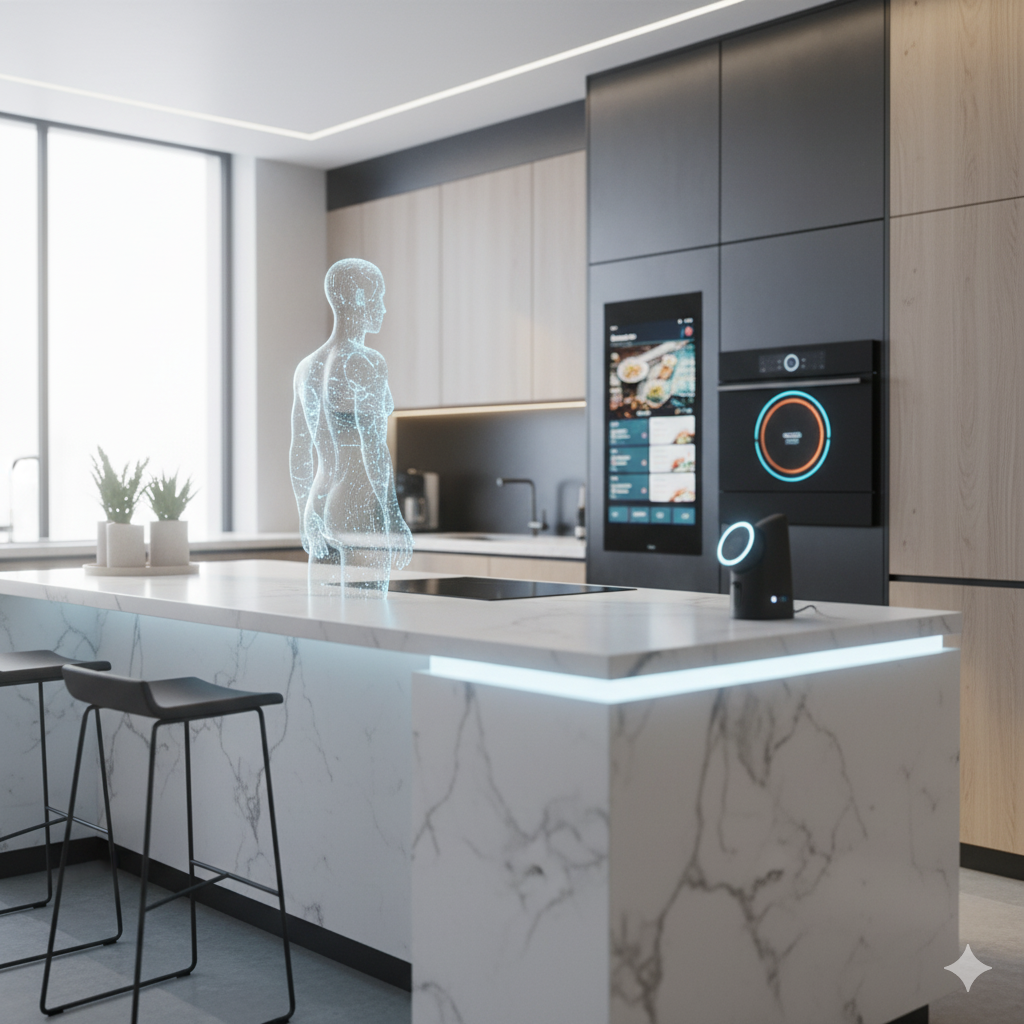

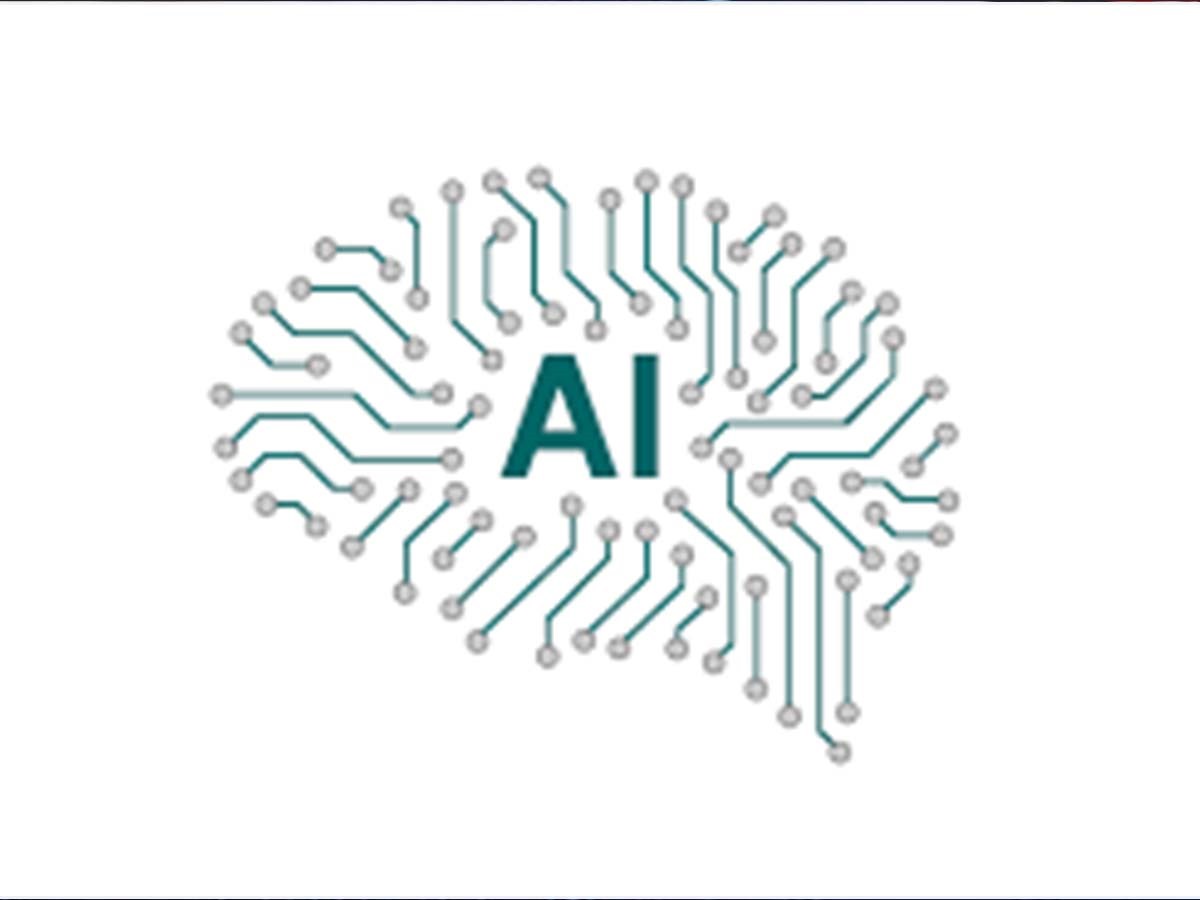
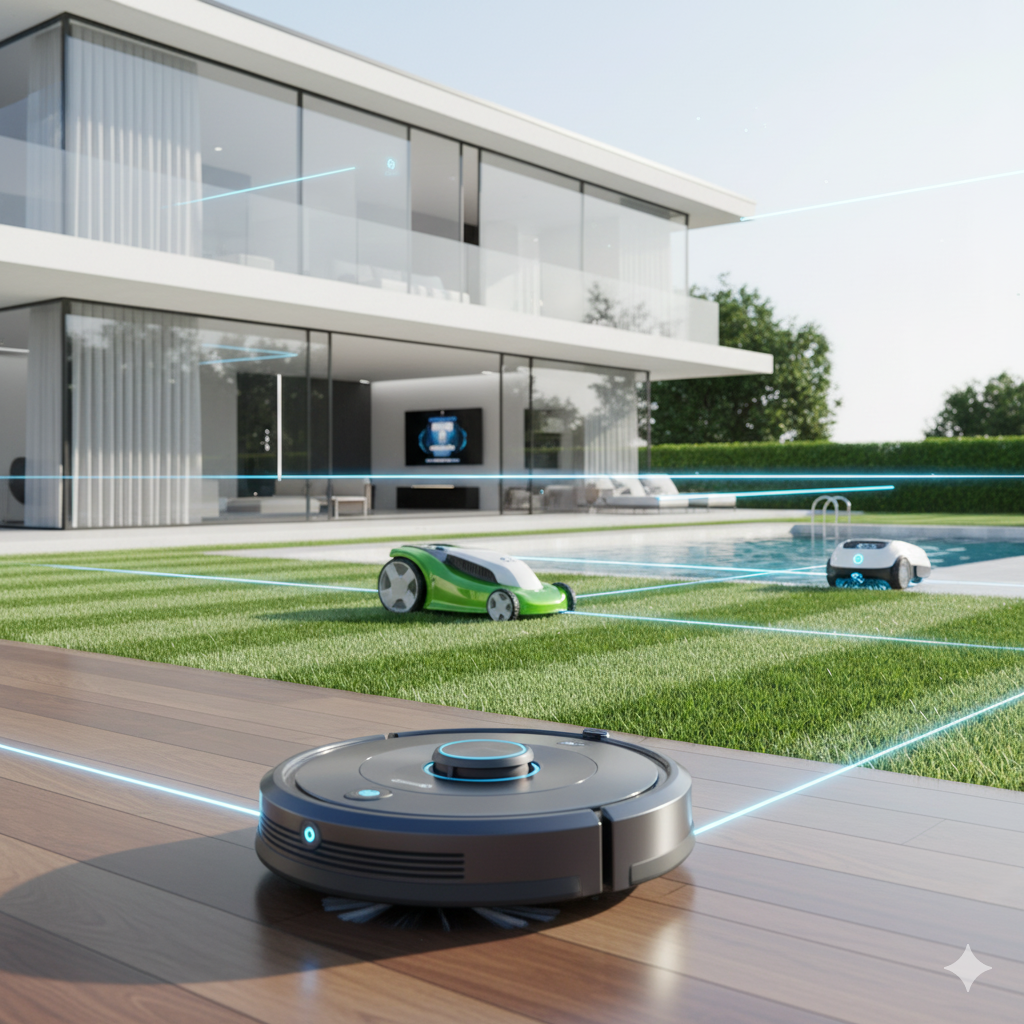

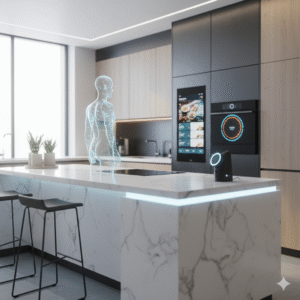


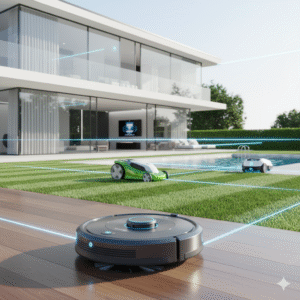
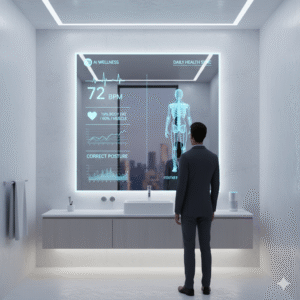


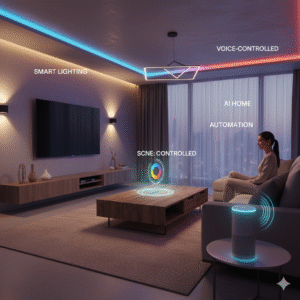
Post Comment